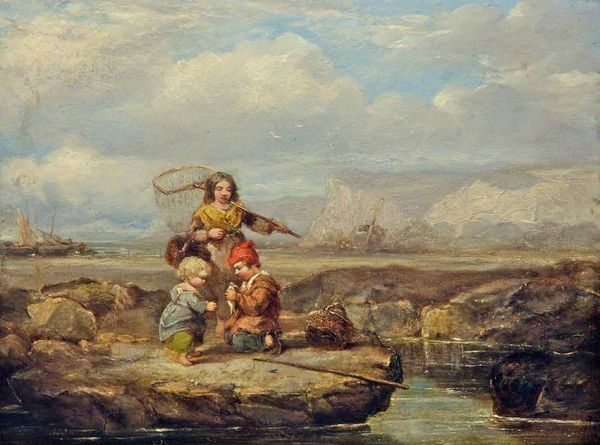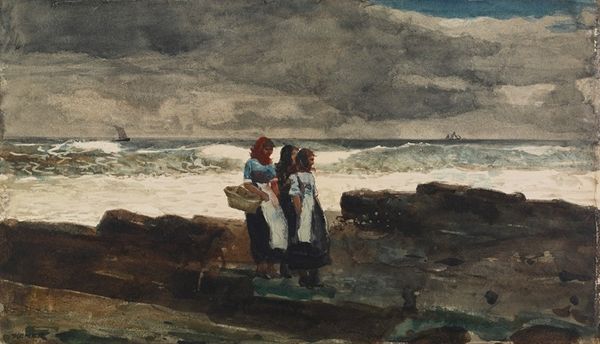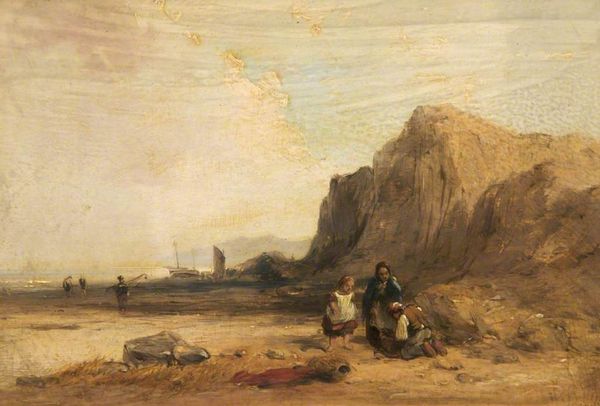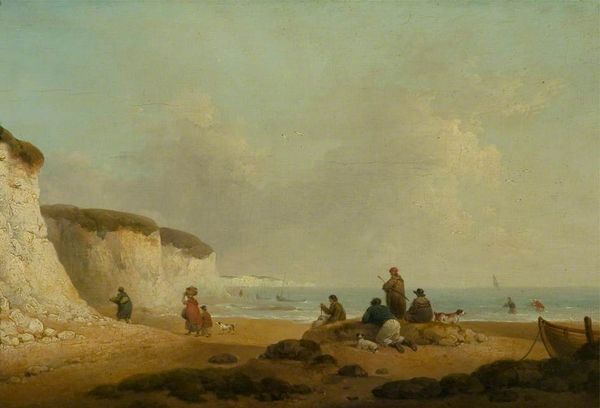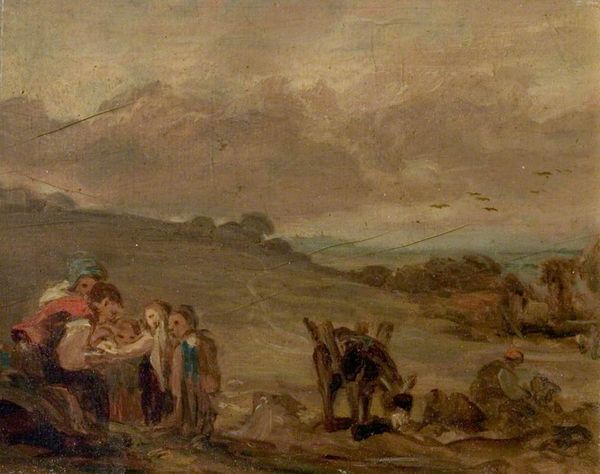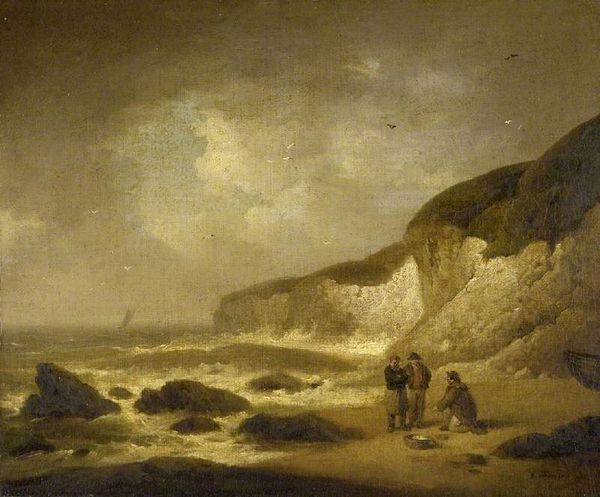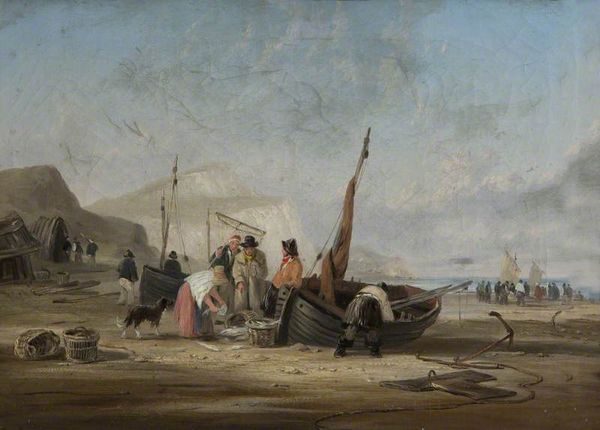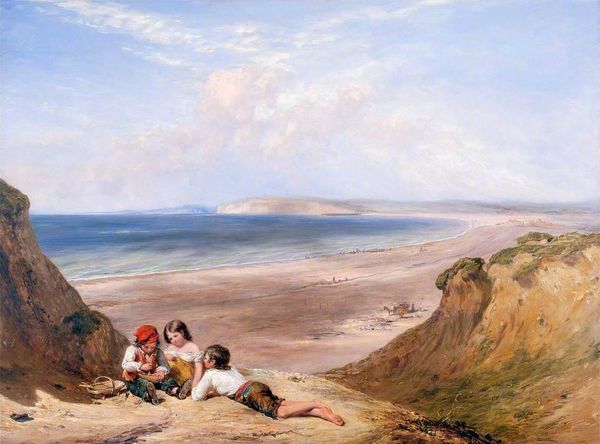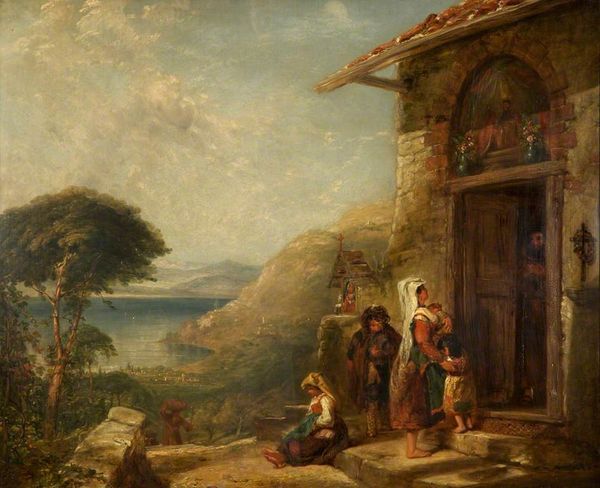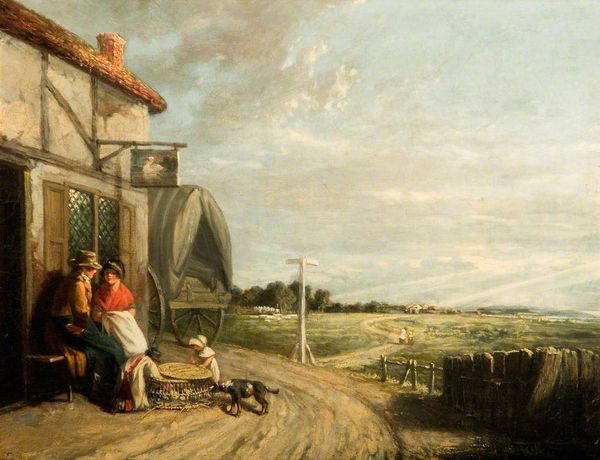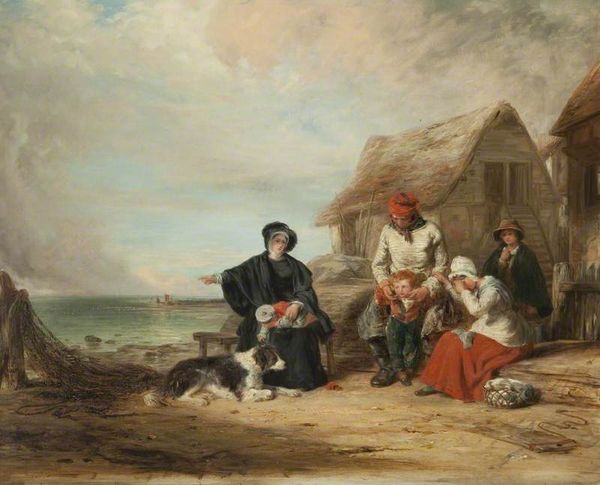
painting, oil-paint
#
portrait
#
painting
#
oil-paint
#
landscape
#
figuration
#
oil painting
#
romanticism
#
genre-painting
#
realism
Copyright: Public domain
Editor: Here we have Thomas Jones Barker's "Landscape with Figures," an oil painting, although the exact date is unknown. There's a palpable sense of melancholic realism to it, particularly in the figures' somber appearance against the wild backdrop. How do you interpret this work? Curator: It strikes me as deeply embedded within the social consciousness of its time, perhaps reflecting on rural life and labor. Note the mother and child. Ask yourself: what societal conditions might have prompted Barker to portray these figures in this way? Are they romanticized or realistically presented, and what does that choice tell us about Barker's intentions and the expectations of his audience? Editor: I hadn't really thought about it that way, viewing it more simply as an observation of life. Curator: But "observation" itself is shaped by social and cultural frameworks. What did it mean to depict working-class figures at this period? Was it an act of social commentary, a celebration of rural life, or perhaps something else entirely? Think about the prevailing attitudes towards the poor and working classes at the time. The museum or gallery that eventually exhibited it would have influenced its reception, as well. Editor: So, the painting is not just a pretty scene, but potentially loaded with social and political implications. Curator: Exactly. And considering that these are possibly members of the working class, what public role did this imagery fulfill? Consider how its message would have been interpreted, depending on who was looking at it. The answer to these types of questions opens up our appreciation. Editor: This gives me so much to consider when I look at it next time. Thanks! Curator: It's crucial to consider these things. We, today, should examine what stories museums present through artworks and, just as importantly, whose stories remain untold.
Comments
No comments
Be the first to comment and join the conversation on the ultimate creative platform.
